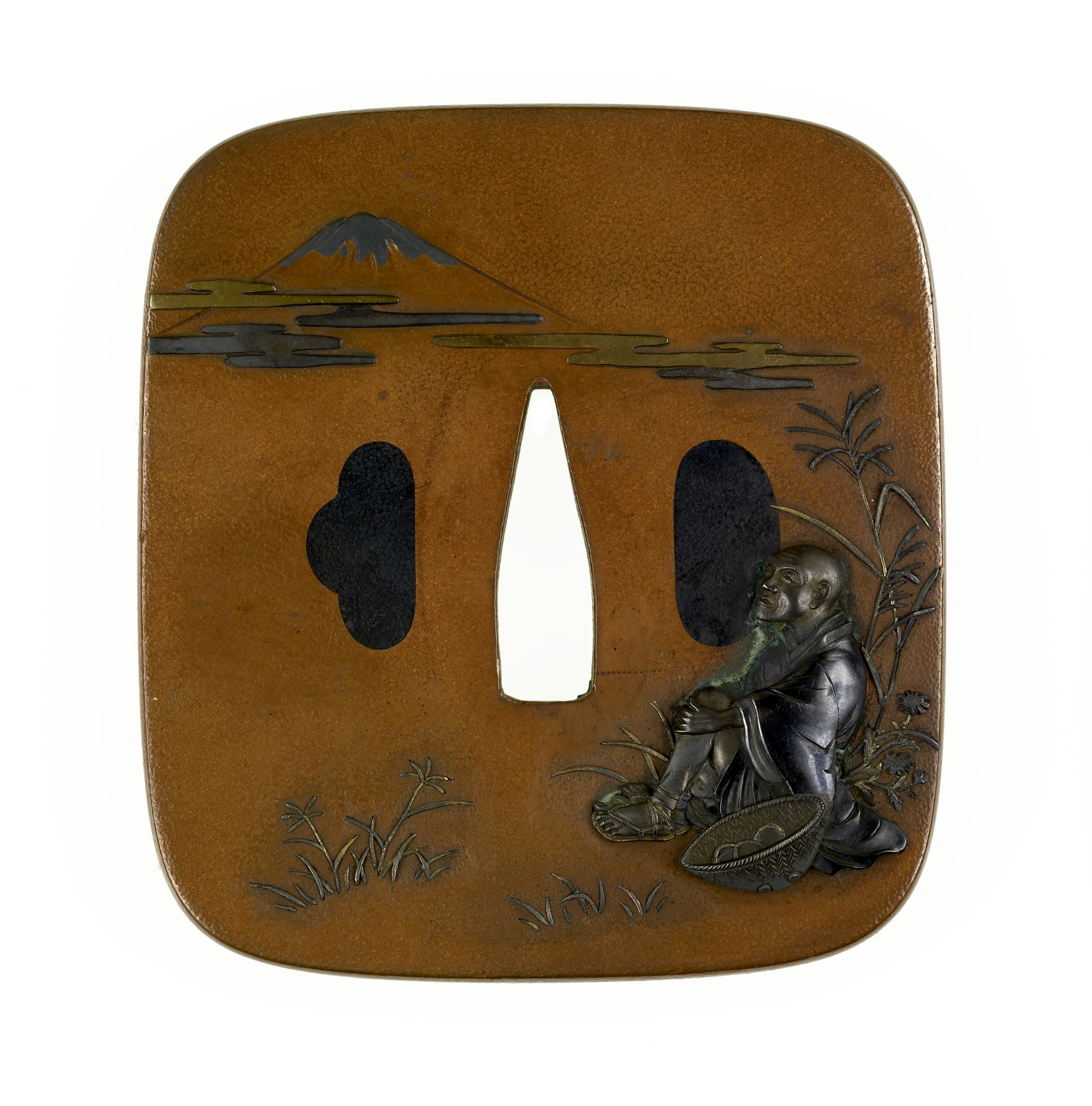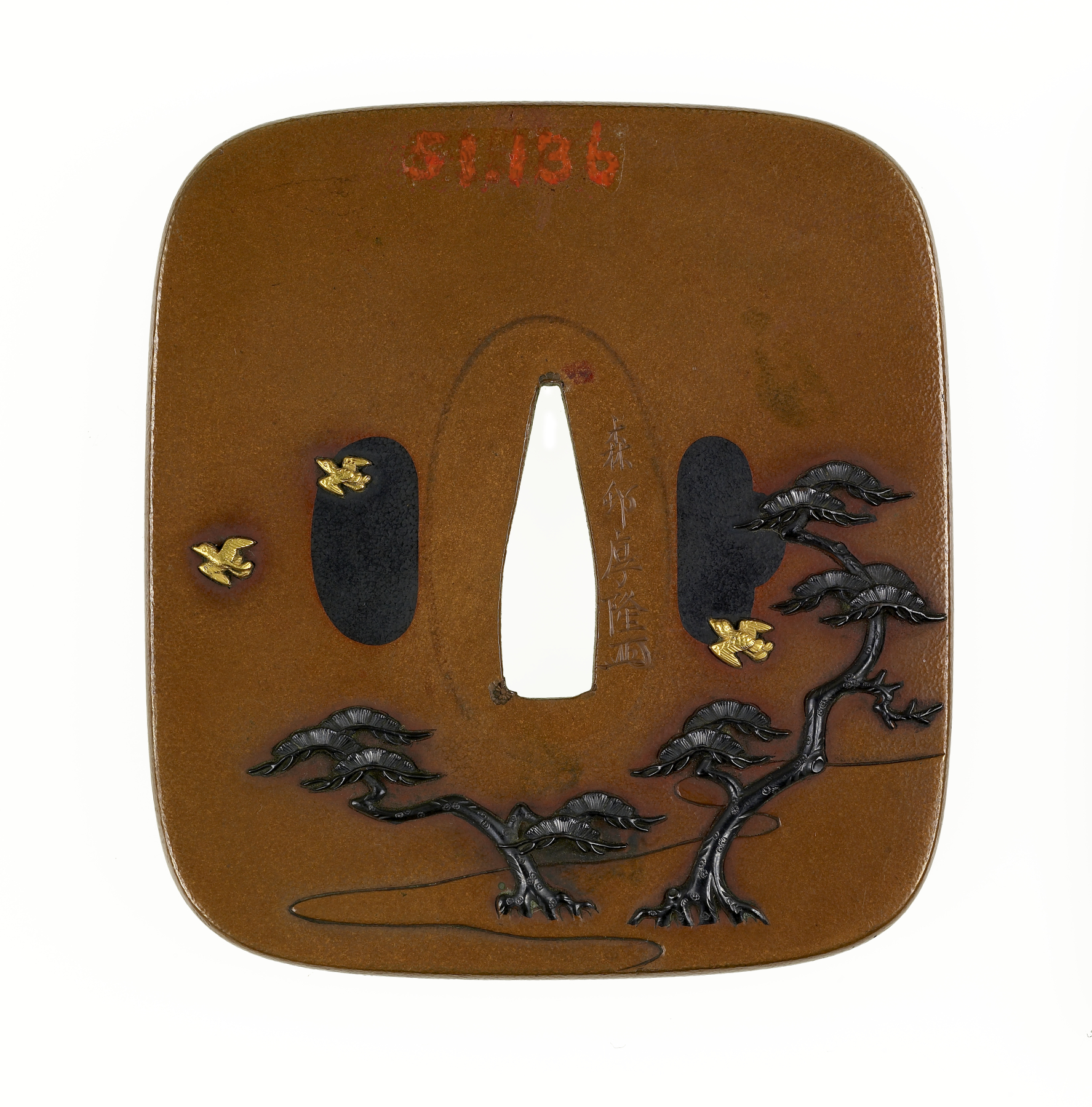Tsuba with Saigyô Gazing at Mt. Fuji
(Japanese Military Armor)
Seated at the lower left of the tsuba is the 12th-century monk Saigyô. Saigyô was a palace guard who became a Buddhist monk at the age of twenty three when the Emperor Toba abdicated and became a monk. Saigyô wandered the country until he died in Kyoto at the age of seventy three. Here he is shown gazing at Mt. Fuji, which is shown on the upper left of the tsuba. Saigyô's traveling hat rests beside him. The reverse of the tsuba shows pine trees and birds. The holes for the utility knife and hair pick are indicated in the background, but do not appear to have actually been cut through the tsuba.
Inscription
Provenance
Provenance (from the French provenir, 'to come from/forth') is the chronology of the ownership, custody, or location of a historical object. Learn more about provenance at the Walters.
Henry Walters, Baltimore [date and mode of acquisition unknown]; Walters Art Museum, 1931, by bequest.
Geographies
Japan, Tokyo (Edo) (Place of Origin)
Measurements
H: 3 x W: 2 3/4 x D: 3/16 in. (7.65 x 7 x 0.48 cm)
Credit Line
Acquired by Henry Walters
Location in Museum
Not on view
Accession Number
In libraries, galleries, museums, and archives, an accession number is a unique identifier assigned to each object in the collection.
In libraries, galleries, museums, and archives, an accession number is a unique identifier assigned to each object in the collection.
51.136






